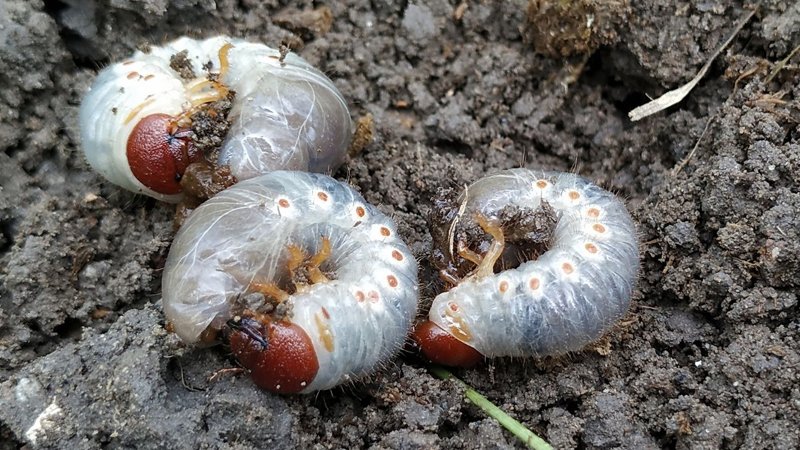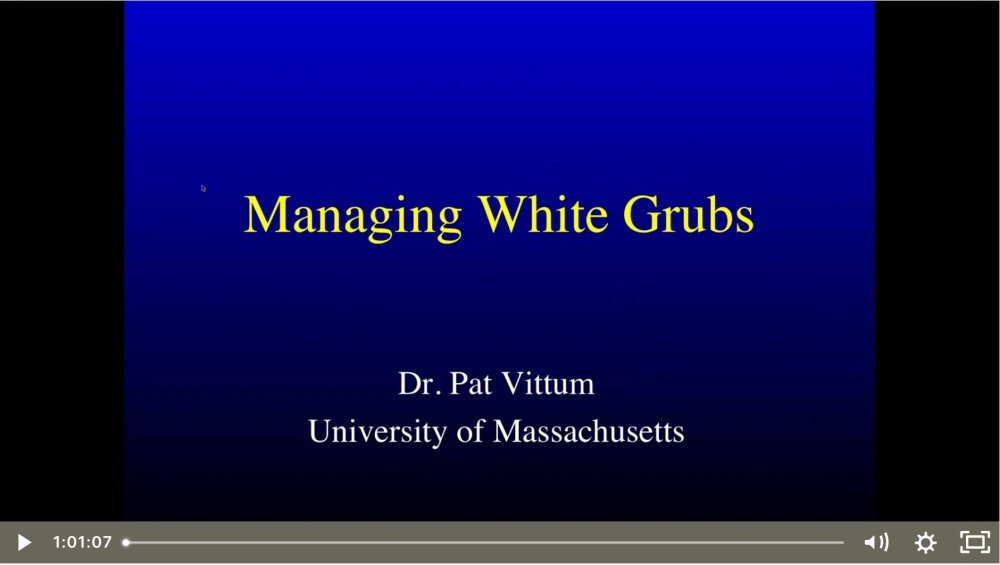The phrase "the best defense is a good offense" most often is associated with football. Its origins, however, more than likely are grounded in military history. It was a philosophy utilized by George Washington during the American Revolution and was a cornerstone of the "The Art of War," a book written by Chinese military strategist Sun Tzu in the fifth century BC.
Combing through old TurfNet webinars in the midst of grub season was a reminder that this philosophy also applies to the battle against white grubs in managing golf course turf. The most effective method for eliminating this foe from its subterranean stronghold where they chew on the roots of turfgrass is to apply an insecticide before they hatch so they have no chance to survive the first or second instar stages.
Watch this TurfNet webinar on grub control by Pat Vittum, Ph.D.
In fact, grubs are such a formidable opponent when they become fat and sassy that retired Ohio State entomologist Dave Shetlar, Ph.D., said years ago at an OTF-OSU field day that the best tool for control for third instar grubs was a bag of fertilizer, joking that the pests were so large that a 30-pound sack dropped on their rasters might be all that could eliminate them.
While Shetlar's advice surely would be lethal against any grub, not all beetle species are created equally.
Among the most common culprits in the war on grubs are the Japanese beetle, Asiatic Garden beetle, Oriental beetle and the European chafer. As their names indicate, all are invasive. Other common grubs that pose a problem in turf include native species like May and June beetles and masked chafers.
Although each has just one life cycle per year, size varies between species and the exact timing of each stage can vary slightly, according to research. That can make control a potential challenge because habitat can overlap between species.
Threshold levels can vary by species, which can be identified by their raster patterns.

After completing the metamorphosis from larva to pupa to adult, beetles typically emerge from the soil in early to mid-summer to feed, mate and lay their eggs. Researchers recommend a preventive insecticide application typically between May and July in an attempt to get product into the ground before the eggs hatch or at least while the larva remain in the first or second instar stage when they are most vulnerable, according to Purdue University research.
Adults are active for up to six weeks, and eggs hatch about a week after being laid. The eggs require moisture in the soil to remain viable, and females are able to delay laying them if the soil is too dry. Larvae remain in the first instar stage for about two to three weeks, and transition to the third instar typically in early fall, research says. After overwintering below the frost line, the grubs ascend through the soil and eventually pupate in late spring before emerging again in June as adults as the process starts over again.
Larvae begin feeding right after they hatch, chewing on the roots of turfgrass and often feasting just below the thatch layer, according to research. Damage appears similar to drought stress, but can be dwarfed in comparison to secondary damage caused by predators like skunks and raccoons as they forage for a meal. Feeding, by both grubs and skunks, continues into early fall, with the exception of the European chafer, which is found in the upper Midwest and the Northeast. First identified in the U.S. in 1940 in Rochester, New York, the European chafer is less susceptible to cold than other grubs, and thus continues feeding deeper into the fall and is active earlier in the spring.
Researchers recommend neonicotinoids, a combination of a neonicotinoid plus a pyrethroid, or chlorantraniliprole for preventive control. For curative control of third instar grubs through summer and fall, scientists recommend a carbamate or organophosphate.
An exception is the Asiatic garden beetle. Native to Japan and China, the Asiatic garden beetle was first identified in the U.S. in 1922 in New Jersey. In a 2003 study, the neonicotinoids imidacloprid and thiamethoxam failed to provide control, but clothianidin did.
What is consistent across grub species is the idea that it is best to strike first, because the best defense is a good offense.



